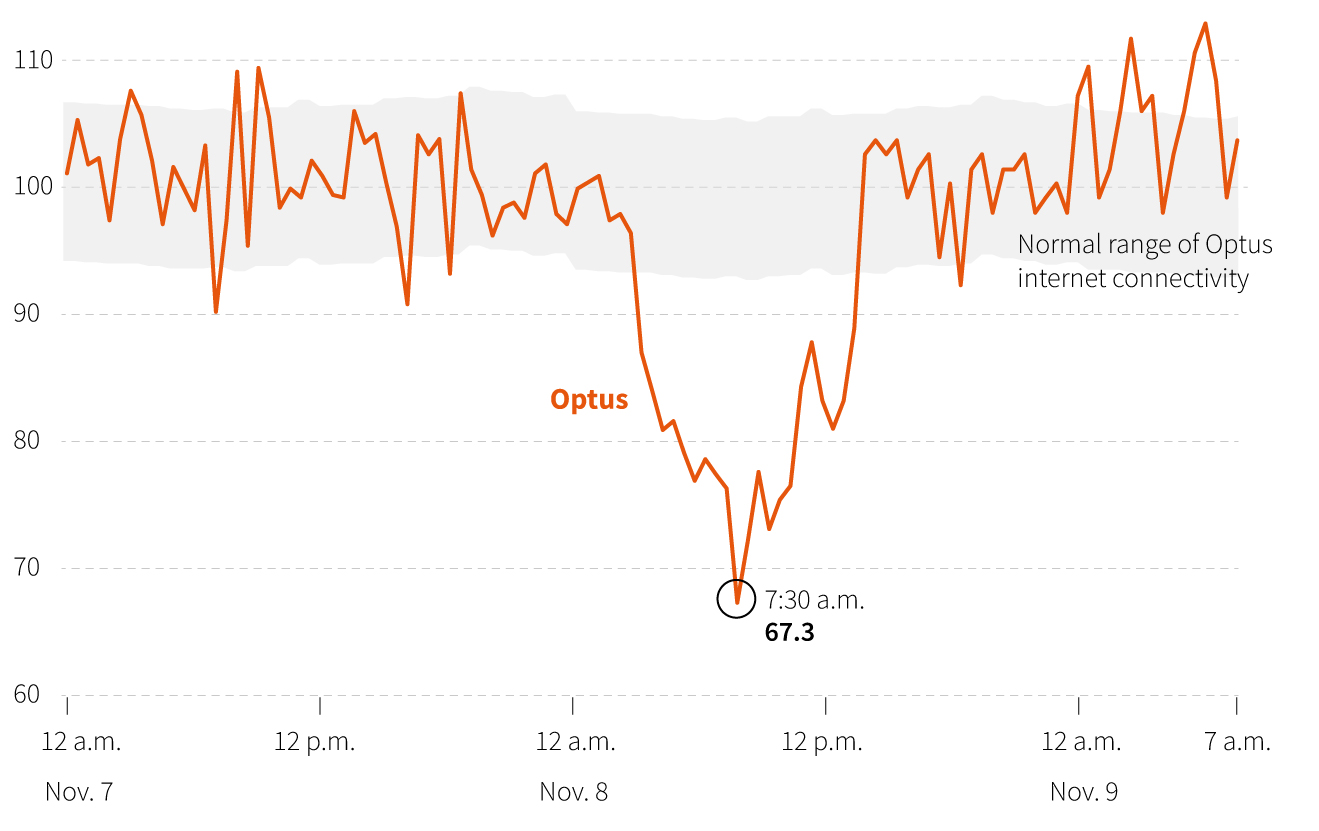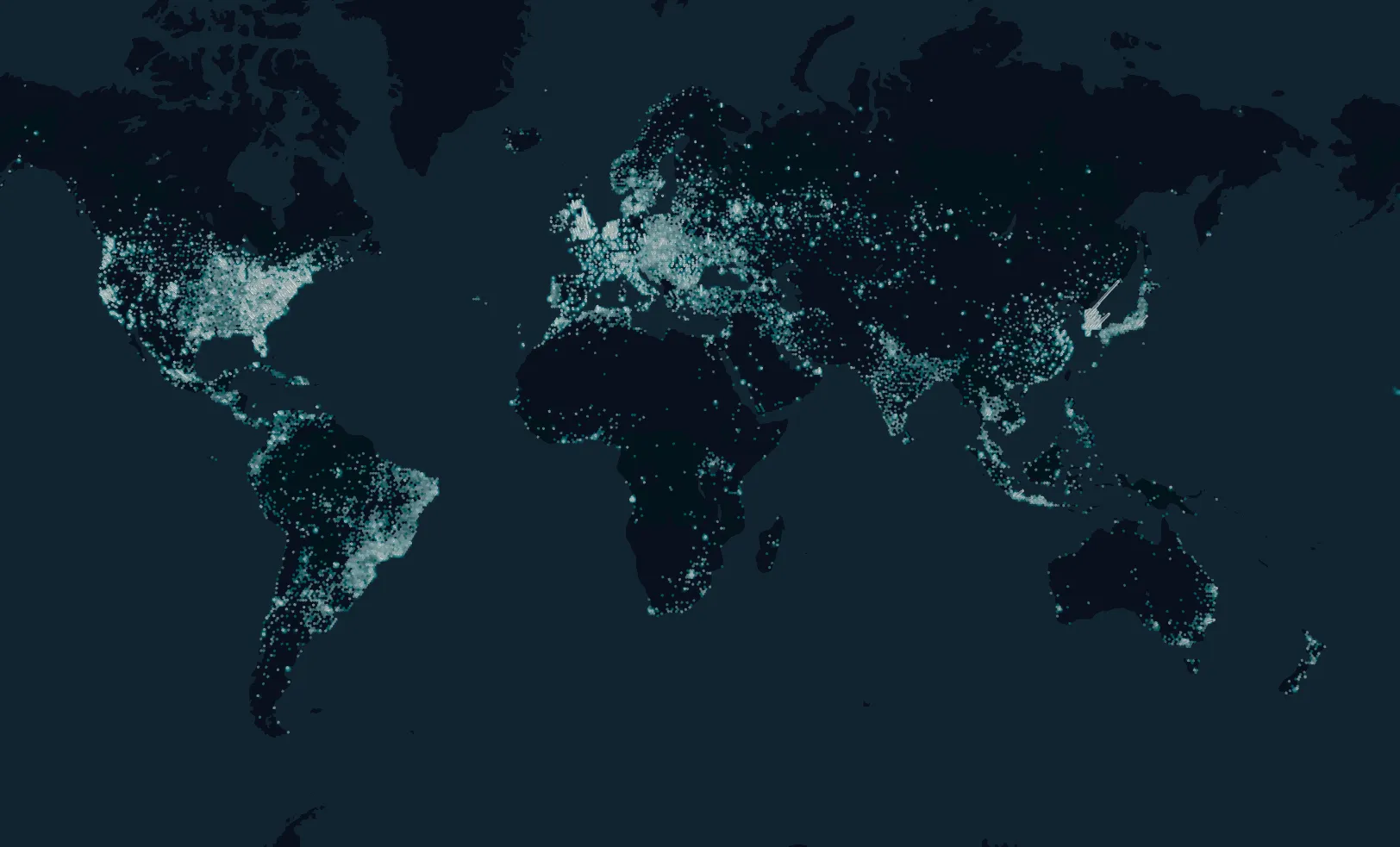On November 8, 2023, Australia experienced one of its largest telecommunications disruptions in recent history when Optus, the country’s second-largest telco, suffered a nationwide outage that lasted for more than ten hours. The blackout affected mobile, internet, and landline services across major cities including Sydney, Melbourne, and Brisbane, leaving millions of customers offline and prompting an official investigation by the Australian government.
While the company cited a network routing issue as the cause, KASPR Datahaus’ continuous monitoring of internet infrastructure provided real-time visibility into how the event unfolded — revealing both the scale and dynamics of the outage as it propagated through the Optus network.
Real-Time Detection of the Outage

Data Source: KASPR Datahaus; Visualisation: Han Huang, Reuters, Nov 2023
KASPR’s network latency data shows a sharp drop in connectivity beginning shortly before 4 a.m. (AEDT) on November 8. At the peak of the incident, connectivity levels fell to just 67.3% of their normal range around 7:30 a.m., as shown in the figure above. This corresponds closely with the time when users across Australia began reporting service failures across internet, voice, and payment systems.
The shaded area in the chart represents the normal range of Optus connectivity derived from KASPR’s long-term measurements. The deviation during the outage stands out clearly — a rapid, systemic collapse across the national network footprint.
Quantifying the Impact
KASPR’s latency and packet-level monitoring enables granular assessment of network disruptions, distinguishing between localised congestion events and large-scale systemic failures.
In the case of the Optus outage:
- Nationwide connectivity dropped by more than 30% within minutes, indicating a core network-level fault rather than regional congestion.
- KASPR’s geospatial data showed simultaneous connectivity declines across multiple states — confirming the event was not region-specific.
- The data also revealed asymmetric recovery patterns, with metropolitan areas restoring connectivity faster than regional zones, consistent with network hierarchy and routing dependencies.
Such real-time insights are critical for both incident response and regulatory assessment, allowing stakeholders to quantify service degradation and its economic impact.
Lessons for Industry and Policy
The Optus outage highlighted the systemic importance of resilient digital infrastructure in modern economies. From hospitals to public transport systems, the dependence on stable connectivity has never been clearer.
KASPR Datahaus’ monitoring framework provides:
- Independent, real-time verification of connectivity disruptions across providers.
- Comparative benchmarking to identify which networks recover fastest.
- Longitudinal data to evaluate infrastructure reliability and investment needs.
As telecommunications networks grow more complex and critical, continuous external monitoring becomes a public good — supporting transparency, accountability, and rapid response.
About KASPR Datahaus
KASPR Datahaus measures daily the connectivity and latency of over 450 million fixed, geo-located internet endpoints worldwide. Our real-time datasets power insights for governments, financial institutions, and infrastructure operators — enabling them to monitor, predict, and act on global digital performance in real time.
Reference:
Article Reference: Reuters – “Australia to investigate Optus internet, phone outage,” Nov 8, 2023

